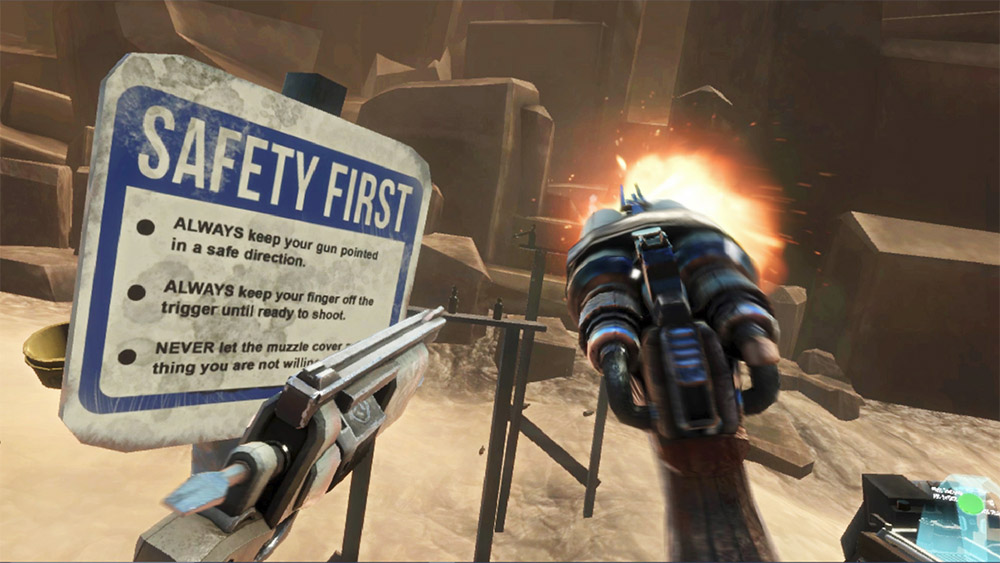The controllers
Winner: HTC Vive
This one isn't even a competition. With the HTC Vive right now I can use any of the console gamepads, a Steam controller or most likely, the wand motion controllers it comes with. They aren't perfect, but right now they offer the best, haptic-feedback providing, multiple input controllers available for virtual reality.
With a wand controller you can have your hands, or some semblance of them in the game with you. This is not only good for more detailed interaction, but it makes VR more intuitive for first time users. Every non-gamer I've handed the wand controllers to has picked up how to use them in minutes. The same cannot be said for an Xbox gamepad.
Vive controllers mean you can dual wield realistic feeling guns in VR
And unfortunately until Touch comes out at some vague date before the end of the year, that's all the Oculus Rift has. Granted it has its remote control too, which is fine for Farlands and similarly light experiences, but for active gaming you need more.
For certain experiences too, like TiltBrush, Hover Junkers or in-fact any shooting game whatsoever, motion controllers are a downright necessity and without them the Oculus Rift feels entirely incomplete.
Tracking
Winner: HTC Vive
Big strides have been made between the days of the Oculus Rift DK2 and the CV1 in terms of tracking. The latest IR camera is more capable, has a wider field of view and does allow for some movement beyond the bounds of what's in-front of you. But as it stands it doesn't hold a candle to the Vive's tracking system.
The Lighthouse sensors can track a user more effectively across the vertical and horizontal axis. Unless you are placing your Constellation camera up high, you are going to find it hard to get close to the floor with the Rift. Likewise turning around and looking down almost always wrecks tracking.
Although the Vive's laser trackers aren't perfect and there are still issues with it losing track of you at times, with proper set up this is incredibly rare. The same goes for the motion controllers, which are easily tracked in spaces of various sizes.
Most importantly though, all of this comes together to allow you to walk around your roomscale space safely (thanks Chaperone!) with the Vive, which you cannot do in the Rift. Yes you can step out of the bounds immediately around your chair or standing position, but with imperfect roomscale tracking and a lack of Chaperone to guide you, it is not comfortable, nor safe to walk around blind.
This may improve when Touch is released, which will bring with it a second tracking camera, but without Chaperone I don't see it being as capable or as comfortable as the Vive. On top of that Oculus has driven development based around seated and standing experiences, which means most roomscale set ups are not going to be as well supported officially as they are on the Vive.
Much like the controllers, the lack of roomscale tracking makes the Oculus Rift feel like a last generation headset. It is simply not as complete a package as the Vive.
 KitGuru KitGuru.net – Tech News | Hardware News | Hardware Reviews | IOS | Mobile | Gaming | Graphics Cards
KitGuru KitGuru.net – Tech News | Hardware News | Hardware Reviews | IOS | Mobile | Gaming | Graphics Cards



